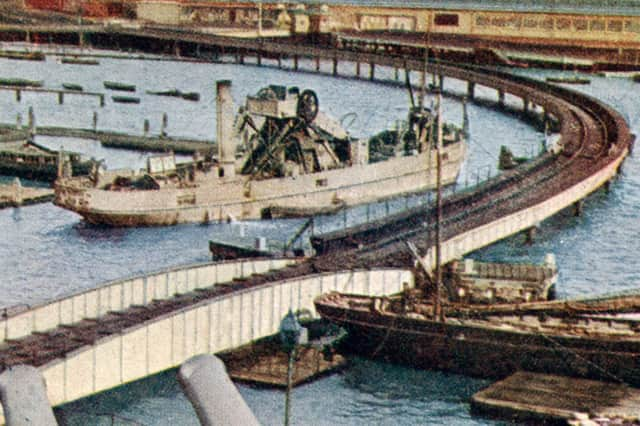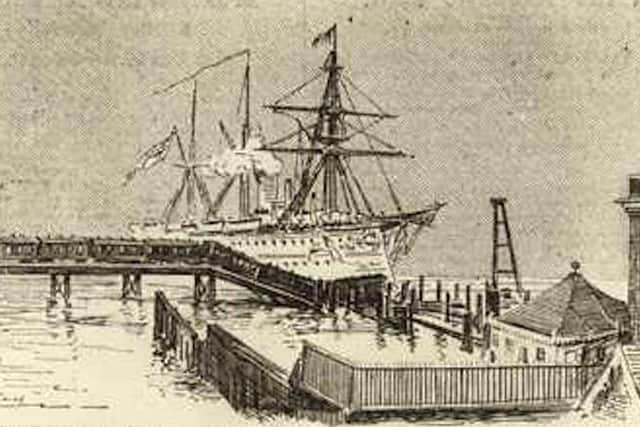NOSTALGIA: The day Crocodile took large chunk out of Harbour viaduct


It happened on Sunday, November  29, 1891, and Mark sent me a small report which appeared in the Daily Graphic, a notable newspaper of the time, but I had to go through The News archive to find the complete story which appeared in the Hampshire Telegraph and Sussex Chronicle.
The Indian troopship HMS Crocodile was an iron-hulled steam vessel rigged as a barque. She was capable of holding 1,200 troops and family.
Advertisement
Hide AdAdvertisement
Hide AdArriving at Spithead in the early morning, at 10am she made her way towards Portsmouth Harbour. As she approached the harbour mouth a dense fog descended obscuring the view to port and starboard.


She was to berth at South Railway Jetty but the fog was so thick the pilot mistook the railway viaduct which ran from Portsmouth Harbour station to South Railway Jetty to be the jetty, and Crocodile was brought alongside.
The resulting collision sent an 80-yard section of the viaduct into the mud along with  three railway carriages. The leading carriage of three others was left hanging perilously over the gap.
The noise of the collision, in the dense fog, was assumed to be much worse by people walking on The Hard, Portsea..
Advertisement
Hide AdAdvertisement
Hide AdThe ship was undamaged but her watertight doors were closed until damage could be ascertained. As there were 1,400 passengers and crew on board this was the most advisable thing to do. As luck would have it, the tide was up otherwise the ship would have run aground.
The pilot put the engines into reverse and the helm hard to starboard otherwise the ship would have ploughed into wooden South Railway Jetty with perhaps loss of life. As the viaduct was of little use the troops were later disembarked at North Railway Jetty.Â
The railway carriages were retrieved the following day but the viaduct took a year to be replaced. The report does not say if these were the carriages left overhanging the gap or included those in the mud too.
Divers went down to see how serious the damage was. The cast-iron piles had been fractured below the level of the lowest tide and the removal of broken joints had to be done before repairs could begin.
Advertisement
Hide AdAdvertisement
Hide AdIt was thought a formal court of inquiry was not needed but a signal from the Admiralty ordered one to be assembled. Captain J Pattisson who had been in temporary command and who was on the bridge at the time of the collision was exonerated of all blame and the verdict given was '˜accident due to fog'.
The viaduct was rebuilt and remained in use until January 10, 1941 when the swing bridge was damaged by German bombing and taken out of use. It was demolished in the late 1950s.
'¢Â I know of several SWS signs on walls of buildings left over from the Second World War, but do you know of any hidden away?
SWS stood for Static Water Supply and there is the well-known one on the corner of Langstone Road and Milton Road in Portsmouth. There is another, half-hidden by a modern building, on a wall in Kingston Road.Â
Advertisement
Hide AdAdvertisement
Hide AdAnother sign was EWS, Emergency Water Supply with an arrow pointing  to the location of the supply. Like SWS, these were always painted yellow. The idea for these supply systems was, I believe, to help put out fires from incendiary bombs if mains were cut by bombing. They were more like large tanks of water put up in the street and covered in sandbags.
They were filled from swimming pools, industrial tanks, especially-built temporary tanks and even bombed-out cellars. Dammed rivers and streams were also used.
 If you know of other signs remaining from the war, please let me know.